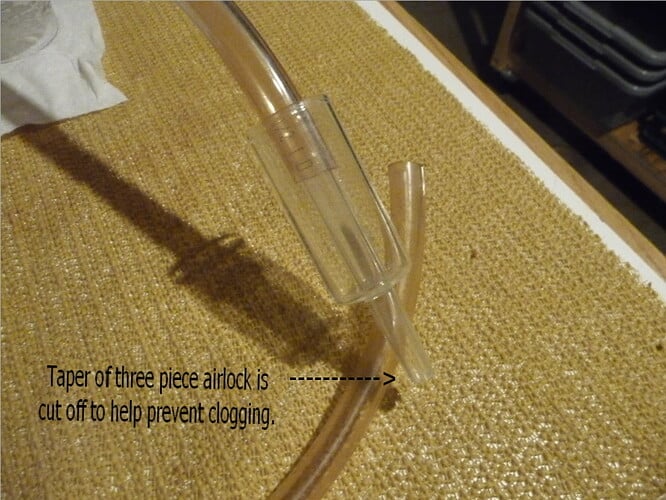I currently only have a 1 gallon brew kit, which generally makes about 9-10 bottles after it is done fermenting. This is pretty much due to some loss during that process, especially because of violent fermentation. Is it advisable to add some additional water during the bottling process, and if so should it be something like distilled water?
Adding water after the fermentation to make up for losses would be the same as adding water before the fermentation. The recipe would be diluted. Best would be to control the fermentation temperature to avoid the loss. Using a larger fermentor may be in order if you still have losses with some yeasts. I have some plastic buckets that are about 2.5 gallons. They formerly held frosting. They could be turned into a fermentor just by drilling the lid for an airlock. Cost of these buckets was $0.50 apiece at the grocery store cake decorating counter.
Dude honestly I would cut your losses and bottle what you have. For a few reasons:
1: There is no point in bottling 10-12 bottles of nasty deluded beer that you won’t drink VS 6 bottles of something you can enjoy and brag about.
2: You run the risk of infection and adding any contaminants from the UNBOILED / UNTREATED water.
3: Your only doing 1 gallon batches at this time which only leads me to believe you aren’t adding salts (Gypsum, Calcium Chloride, etc.) to your water. But if you were, the new water will effect the water profile of your beer and ultimately effect the flavor. This may seem a bit extreme to think about for a single gallon batch, but weather your making 1 gallon or 20 gallons, it’s all the same just in larger portions.
Don’t cut yourself short on quality just to stretch quantity. Would you drink half of a beer and top it off in the sink when you wanted a refill? Yeah didn’t think so… Haha
I agree. Bottle what you have and move on. Learn from your mistakes and keep brewing.
That is kind of what I was thinking. Thanks for reiterating my concerns. I do know it was water things down a bit, but I may just use a bigger primary fermenter as @flars mentioned so even if I do still lose a bit I will still get a better yield once I get to the bottling stage.
If I do use a 2-1/2 gallon primary fermenter will there be enough space to prevent much loss due to blow off?
A one gallon brew in a two and a half gallon fermentor should have no blow off issues if the fermentation temperature is controlled. Although I would still use a blow off tube when fermenting with WY 3068.
With a what? Newbie here, so I have no idea what a WY 3068 is.
Typically, I will ferment at room temperature. The brews I have done in the past were during the fall and winter, so room temp is in the high 60’s to low 70’s. Would a swamp cooler solve this problem?
A blow off tube replaces most of the pieces of a three piece airlock. Airlocks can clog with krausen. The resulting pressure blows the airlock out or the bucket lid off spewing beer over adjacent walls and even the ceiling.
Picture is a blowoff tube attached to the center post of the three piece airlock. The end of the tube goes down into a small bucket with some sanitizer to keep crawlies from going up the tube into the fermentor. If this bucket is higher than the fermentor there is risk of the sanitizer being sucked back into the fermentor.
WY 3068 starts very fast, produces a very high krausen. The only time I use a blow assembly is with this yeast. There are probably some other yeasts with the same characteristics though.
I do have a blow off tube, but never used it the way you have shown. I usually just push into the airlock hole of the cap on my fermenting bottle. That tip about cutting of the bottom of the airlock is awesome. I will have to do that for my next brew.
So, I am guessing the WY 3068 is just a particular type of yeast, which I suppose is pretty standard with the 1 gallon batches I have purchased through this site so far.
I Mostly use Wyeast. Have used dry yeast a few times in the last decade. I harvest from the fermentor so I don’t buy yeast to often.
Some good yeast reading sites:
http://www.wyeastlab.com/hb_yeaststrain.cfm
http://www.danstaryeast.com/products
http://www.danstaryeast.com/articles
http://www.whitelabs.com/beer/homebrew/listings
https://www.yeastman.com/Login/Public/Report/PublicLabQCResult.aspx
